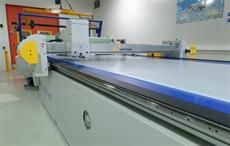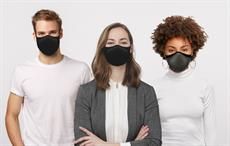Scientists at the Tohoku University Graduate School of Medicine and the Japan Community Health Care Organisation's Sendai Hospital have created a simple, disposable, and inexpensive device to enhance protection for healthcare workers performing esophagogastroduodenoscopies (EGD). The device provides additional barrier to doctors performing the procedure.
The COVID-19 pandemic has thrown up unimaginable challenges for healthcare workers. Even simple outpatient procedures such as endoscopies can expose staff to the risk of infection.Scientists at the Tohoku University Graduate School of Medicine and the Japan Community Health Care Organisation's Sendai Hospital have created a simple, disposable, and inexpensive device to enhance protection for healthcare workers performing esophagogastroduodenoscopies (EGD). The device provides additional barrier to doctors performing the procedure.#
An EGD is an endoscopic procedure by which a doctor examines a patient's esophagus, stomach, and upper intestines. The procedure causes patients to cough or retch, exposing workers to body fluids or aerosol droplets.
Given that COVID-19 is easily spread via air-borne transmission, researchers from the gastroenterology departments at the Tohoku University Graduate School of Medicine and the Japan Community Health Care Organisation's Sendai Hospital set out to create a device capable of catching droplets without causing further discomfort to the patient.
The new device comprises a mouthpiece equipped with a fixing belt and a nonwoven fabric to cover the patient's face, thereby capturing aerosol droplets.
The square, nonwoven fabric is attached to the tips of the mouthpiece using symmetric cuts made by scissors. An x-shaped incision at the centre of the fabric acts as a sleeve for the endoscope--providing minimal interference.
Special care was taken in choosing the fabric. Having a tight enclosure would exposure patients to respiratory stress and risk choking if vomiting. The nonwoven fabric maintains high elasticity and air permeability, providing minimal discomfort for the patient.
"This device is expected to capture the coarse droplets from subjects undergoing an EGD and to reduce the diffusion of aerosol droplets," exclaimed Doctor Hiroyuki Endo, the corresponding author of the paper. "In addition to existing personal protective equipment, this simple and inexpensive device can be used as a standard precaution in every EGD."
Fibre2Fashion News Desk (SV)


